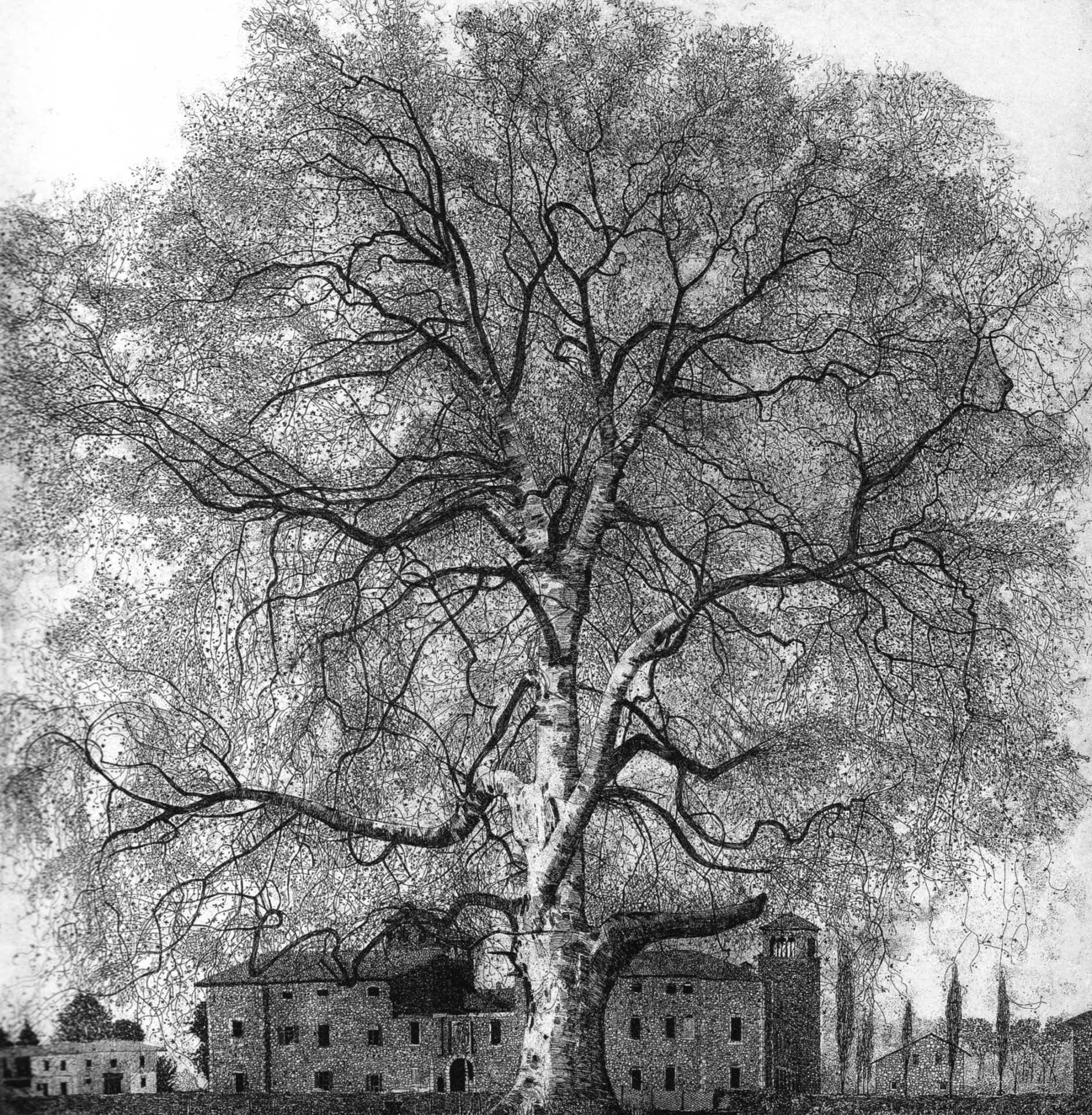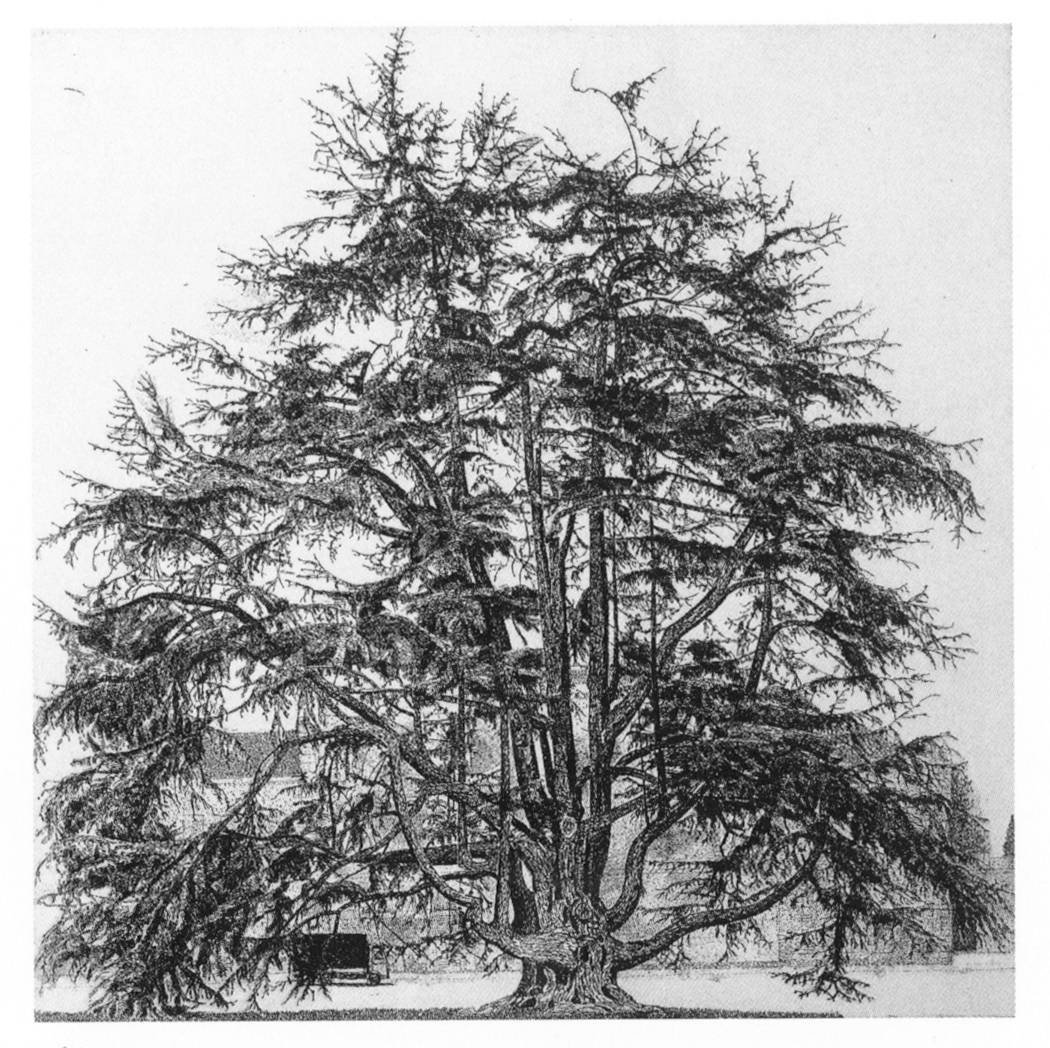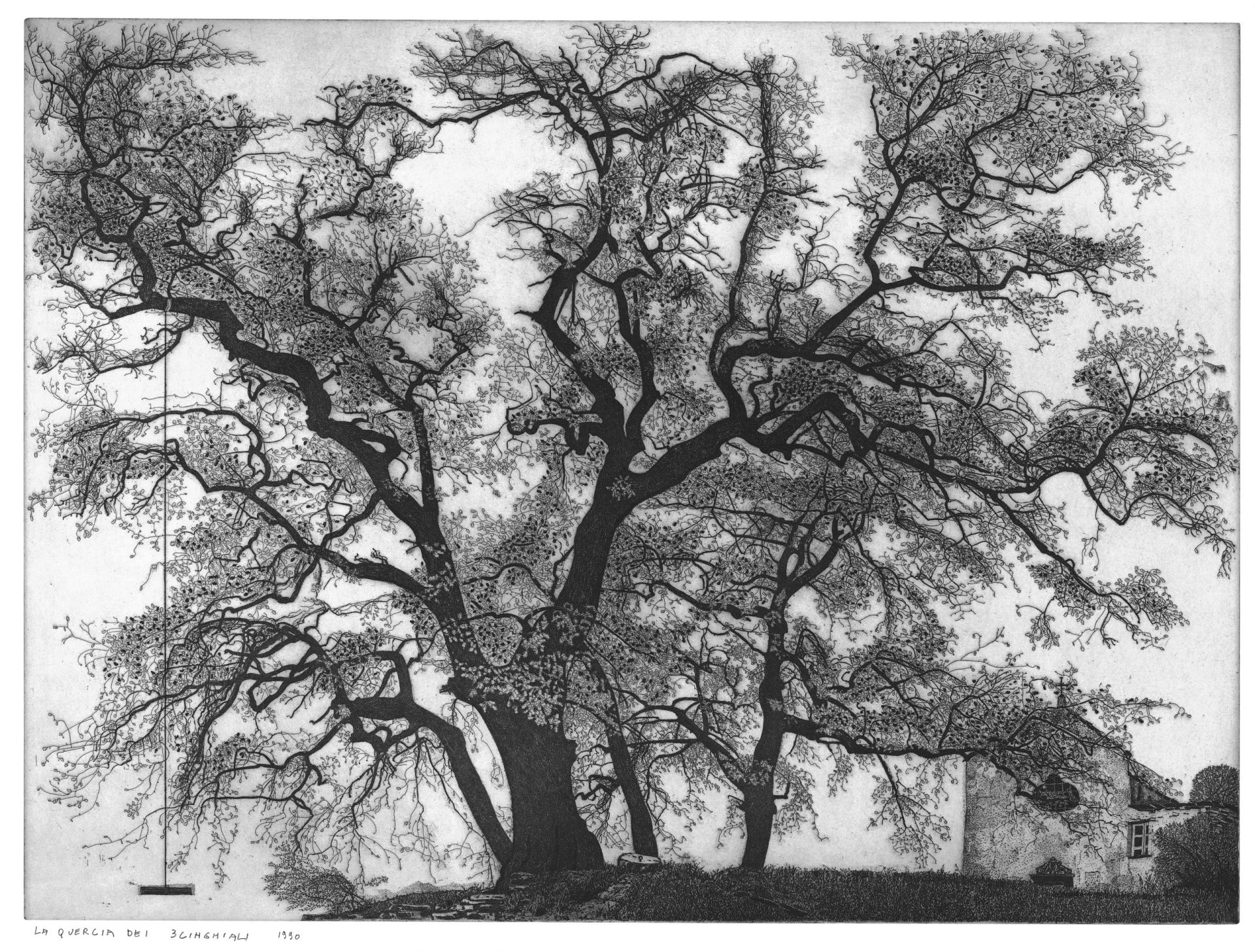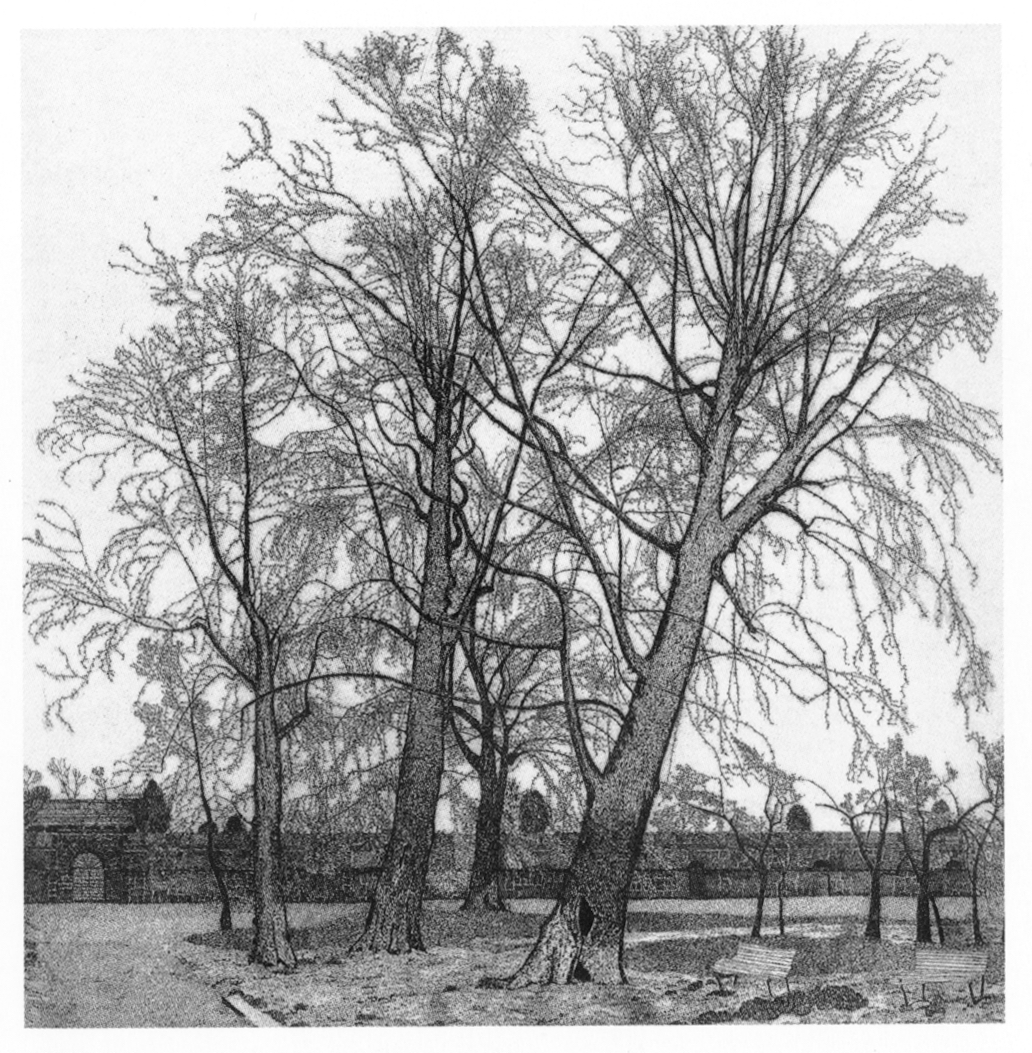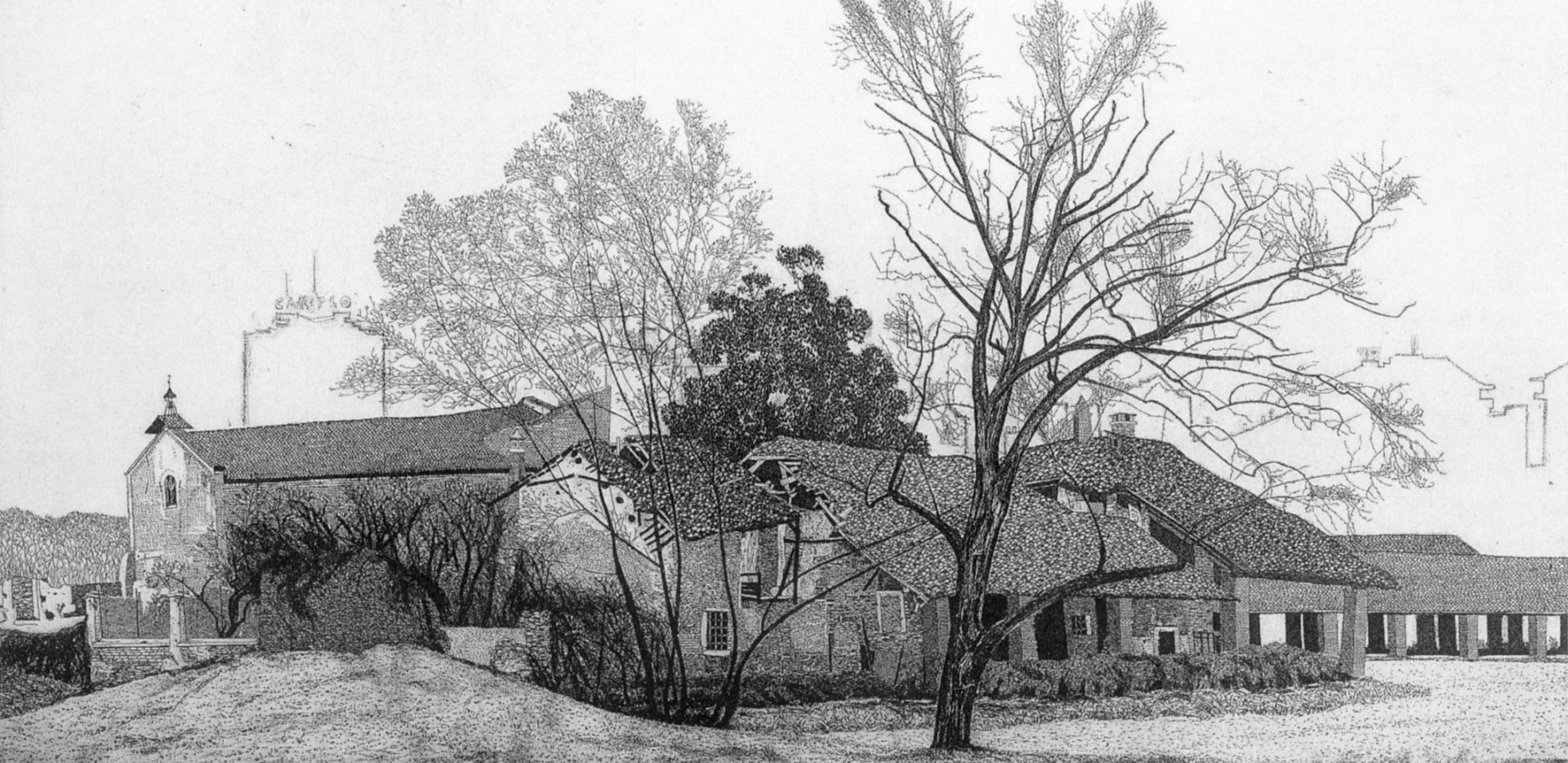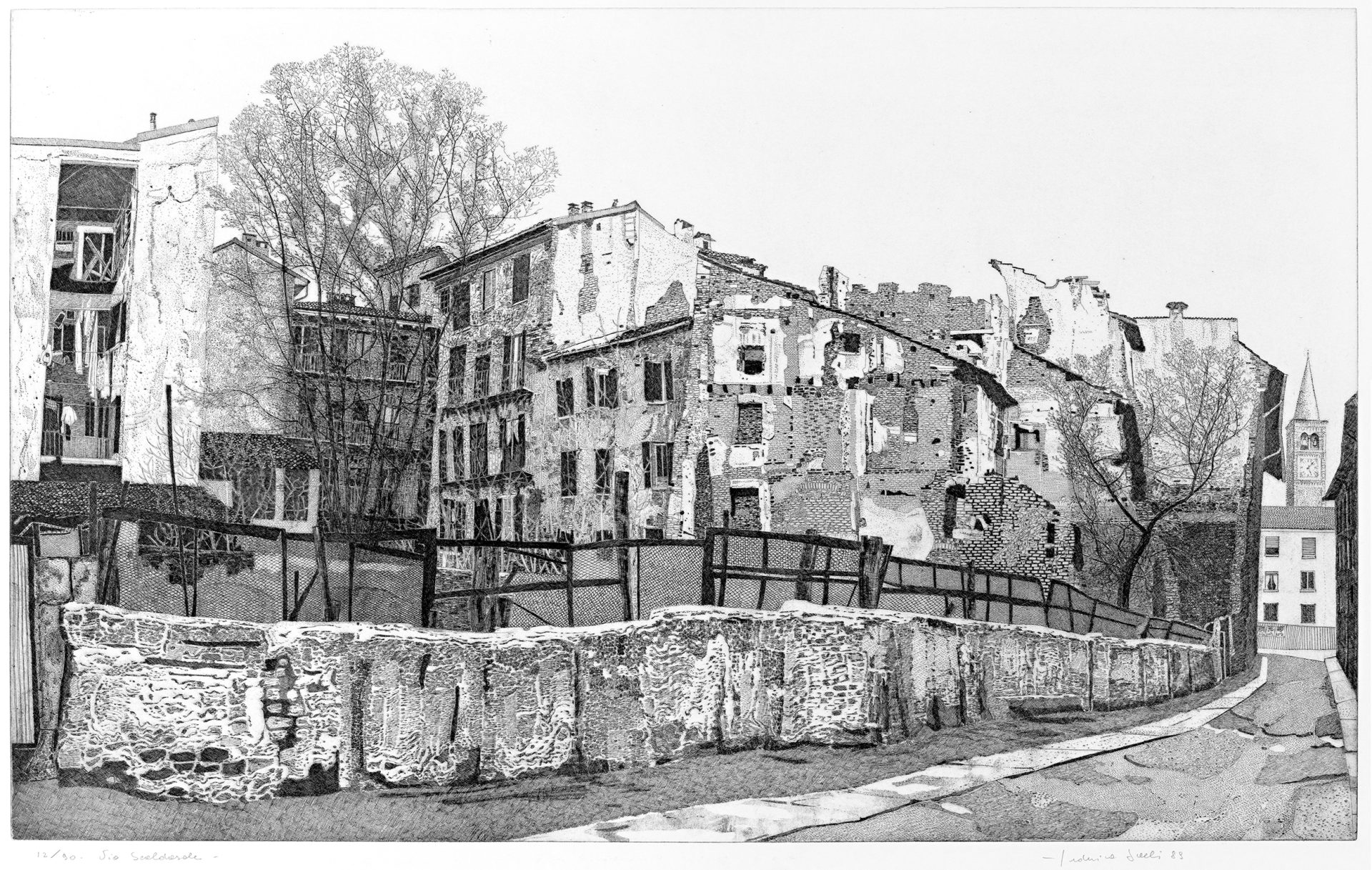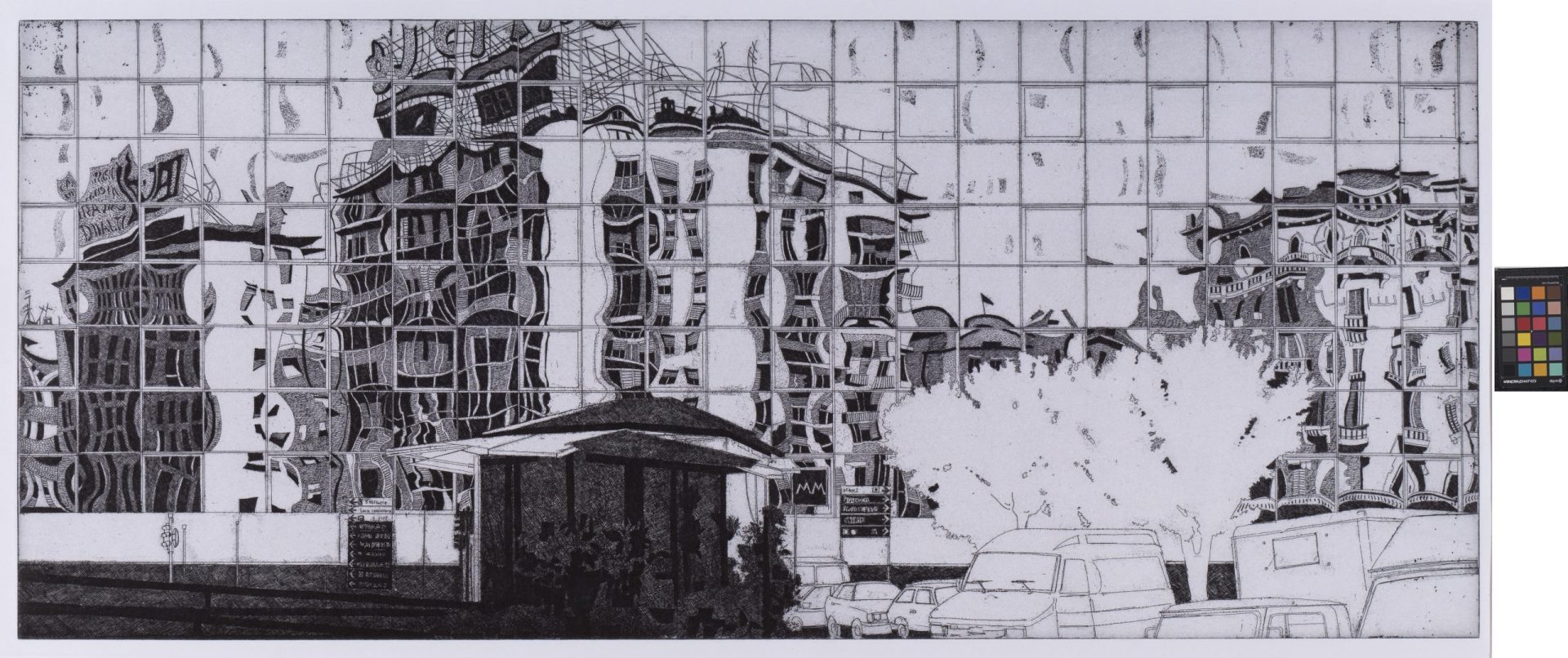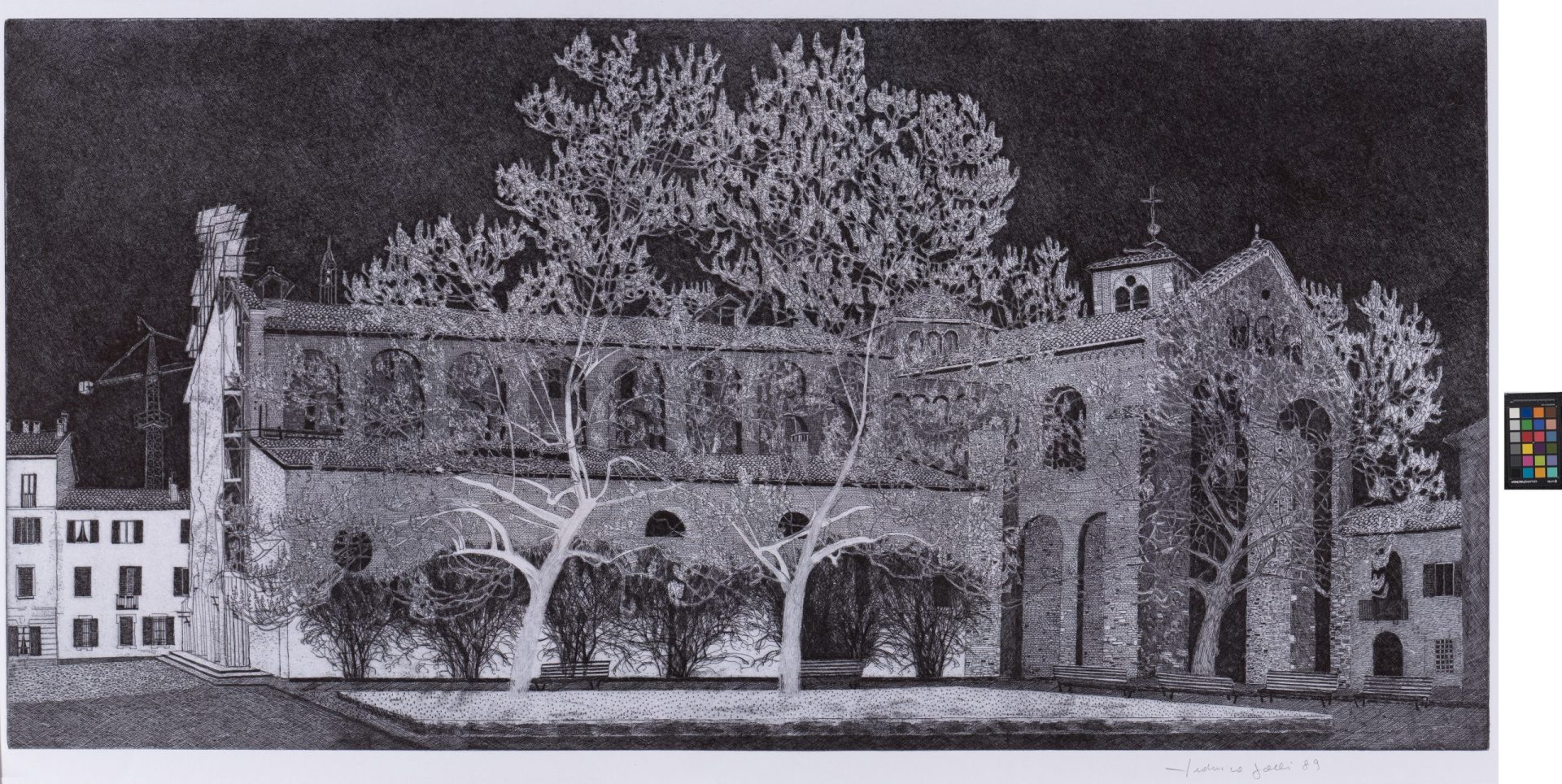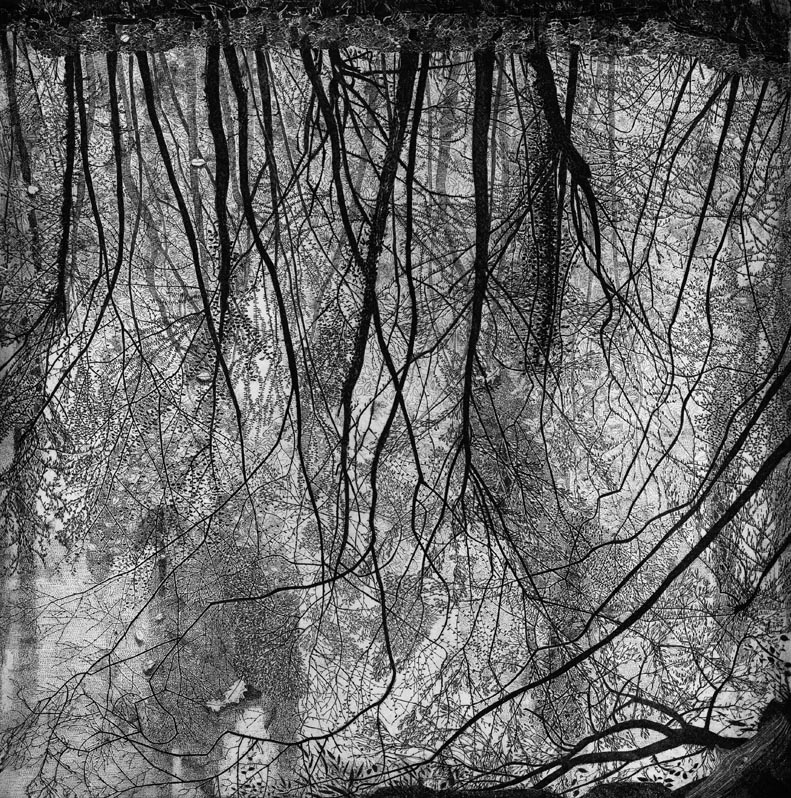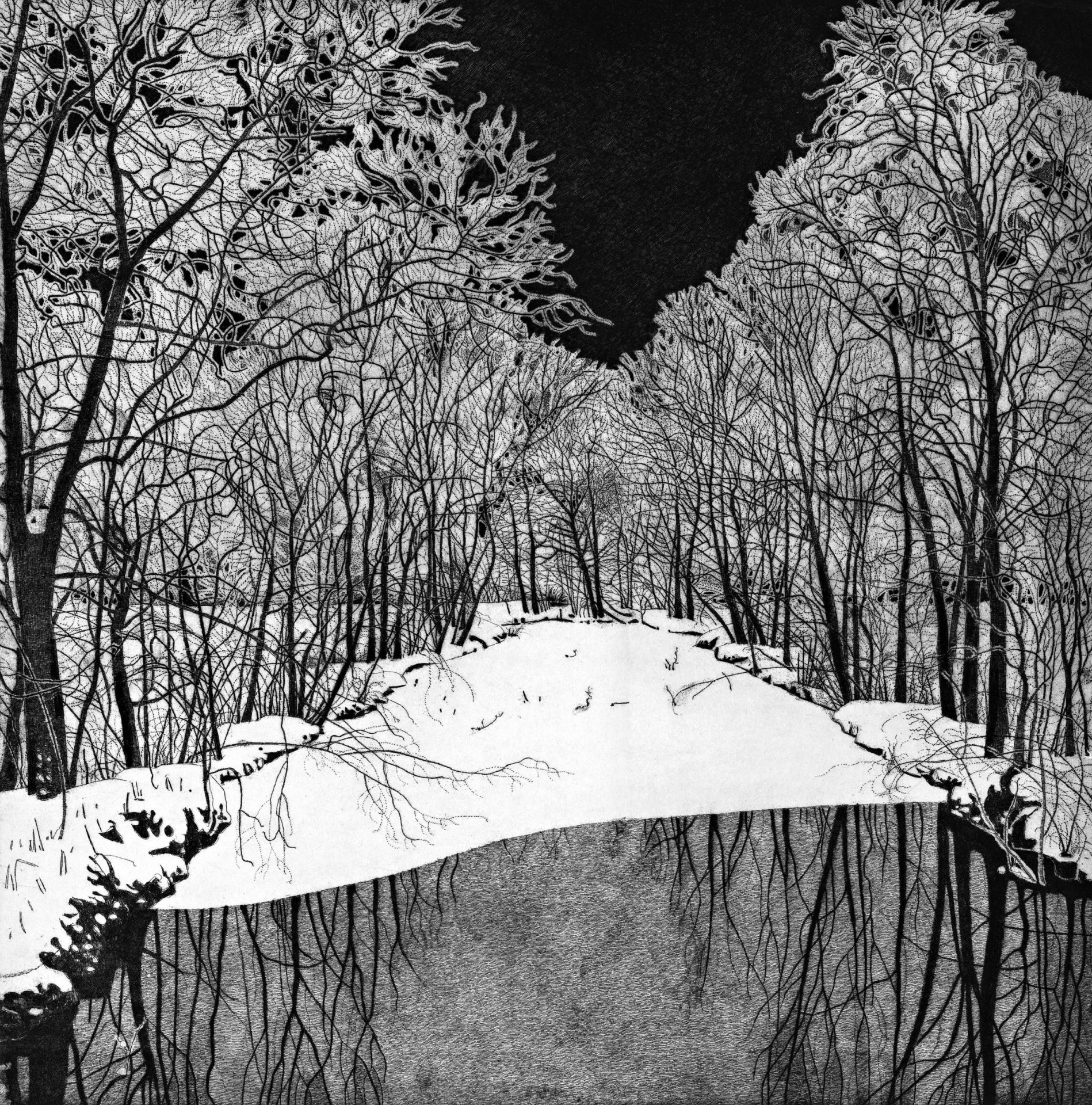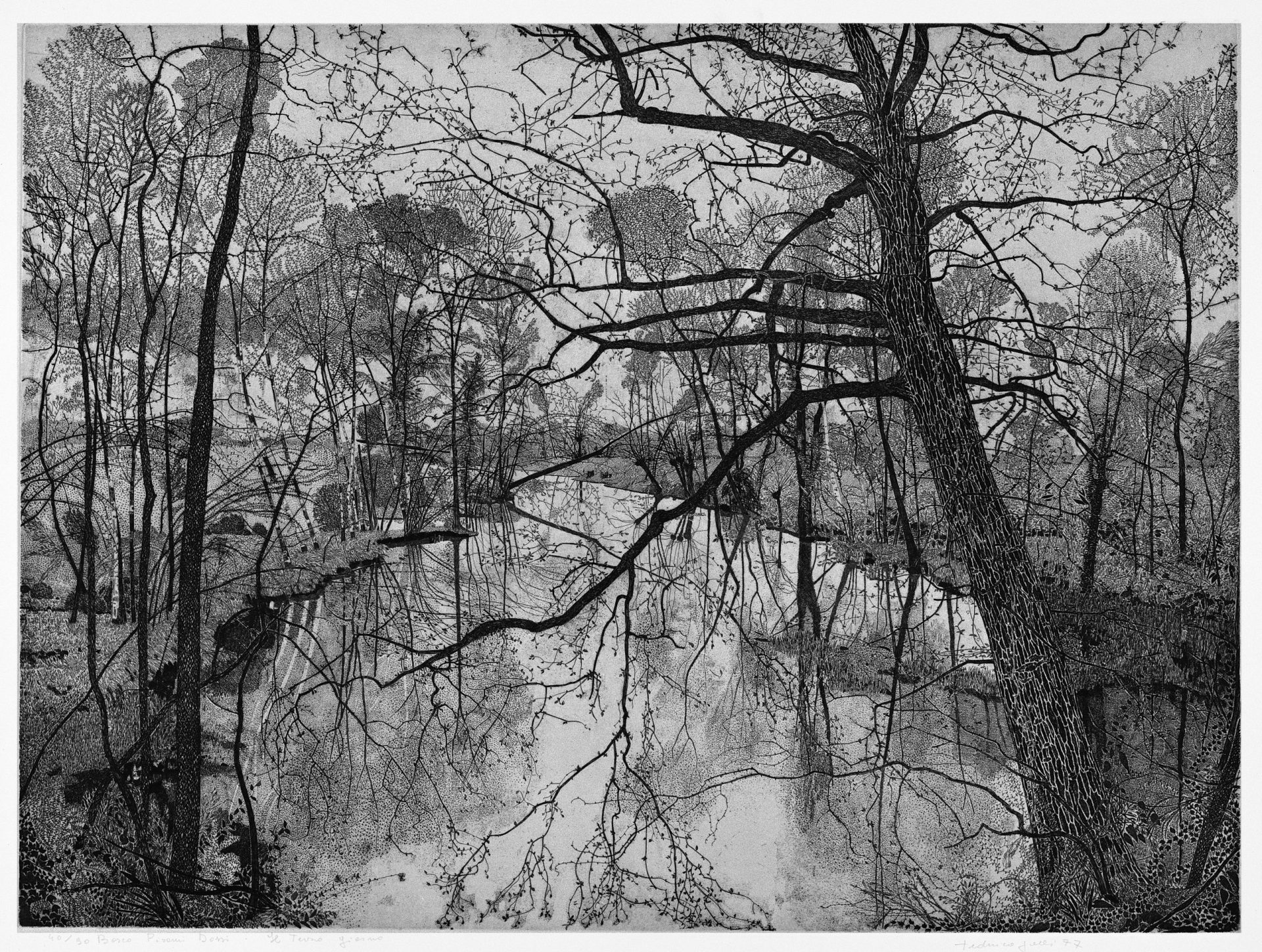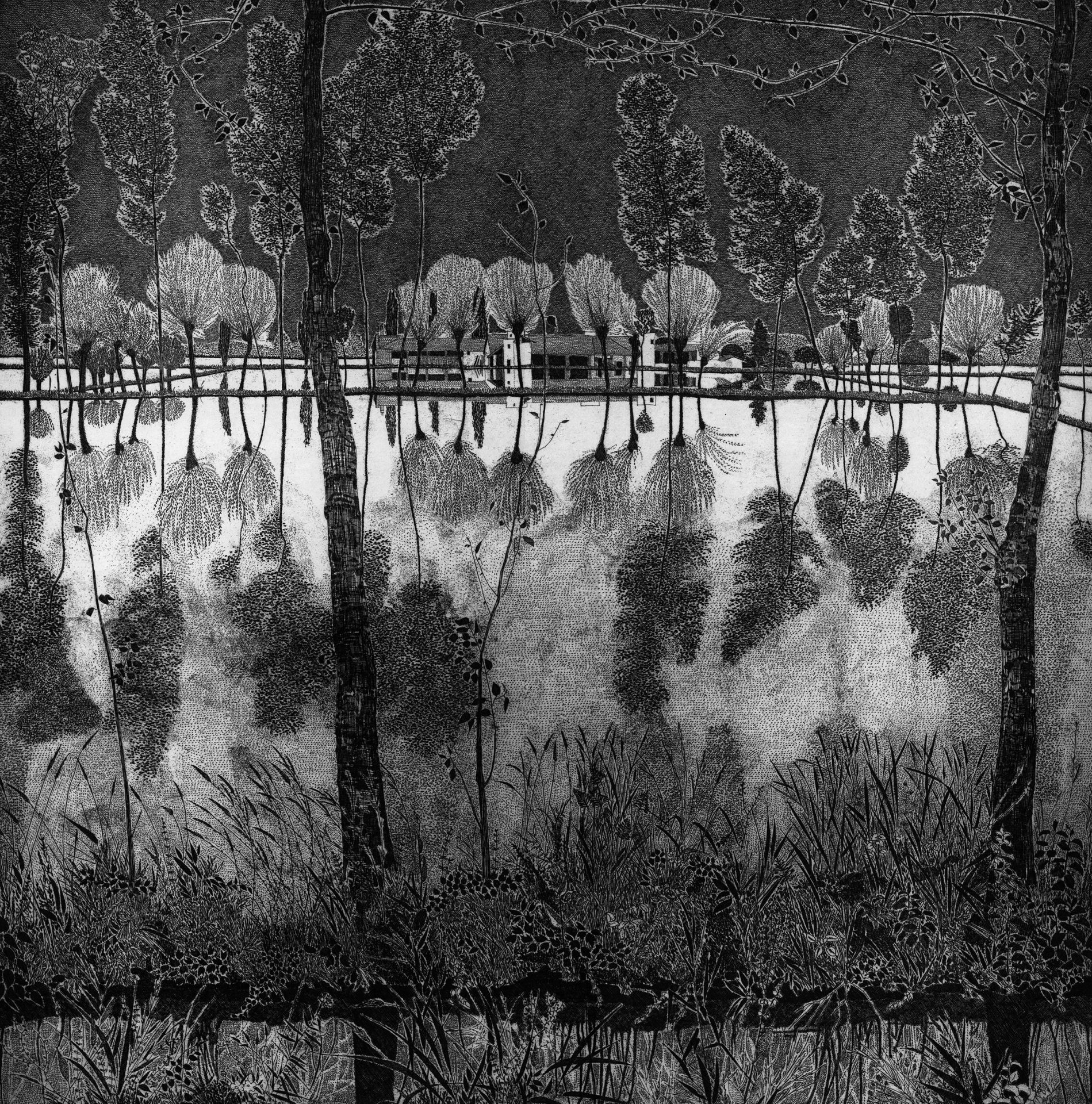Federica Galli: nature engravings
Federica Galli was born in 1932 in Soresina, in the Cremona area, immersed in that landscape of the plains that would accompany her figuration throughout her life as an artist. At a very young age, she defied her family and moved to Milan, where she first attended art school and then the Brera Academy. In the early 1960s, after visiting a Rembrandt exhibition in Amsterdam, she decided to give up painting for good and to devote herself exclusively to engraving.
He worked until the end, leaving almost nine hundred engravings, which embrace different themes: trees above all, but also landscapes of the Po Valley, the Alps and the sea, rural and urban architecture. The subjects are always real and classic, interpreted in a figurative language, but developed with a new and personal style and a rare technical virtuosity. In 1987, under the aegis of Olivetti, she challenged the great engravers of the Grand Tour and produced a portfolio dedicated to the city of Venice, with 39 views, which opened the doors of the most prestigious international museums.
Her career has been studded with awards and successes manifested in over three hundred exhibitions in Italy and abroad. Her work is housed in prestigious Italian museums, such as the Castello Sforzesco museum in Milan at the Veneranda Pinacoteca Ambrosiana, and international museums, such as the NMWA in Washington, the national museum that owns the Vedute di Venezia cycle.
In 1971 the City of Milan awarded her the Ambrogino d’Oro, while in 2019, on the occasion of the tenth anniversary of her death, it inscribed her name in the Famedio at the Monumental Cemetery. In 2021, Milan dedicated an important anthological exhibition to her and named a street after her in the lively Bicocca district.
Her memory, archive and entire artistic and commercial production are protected by the Federica Galli Foundation, based in her beloved Milan.
Artist:
Federica Galli

